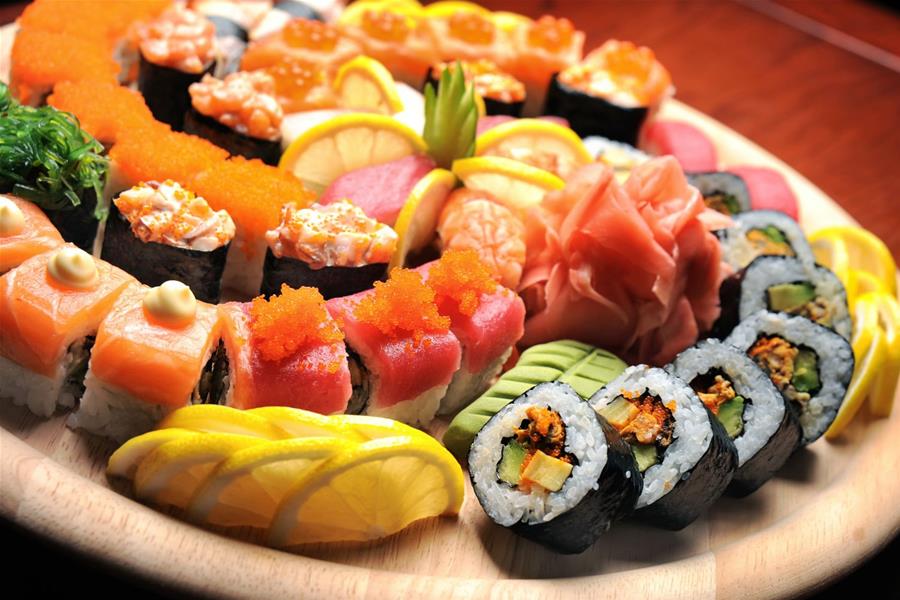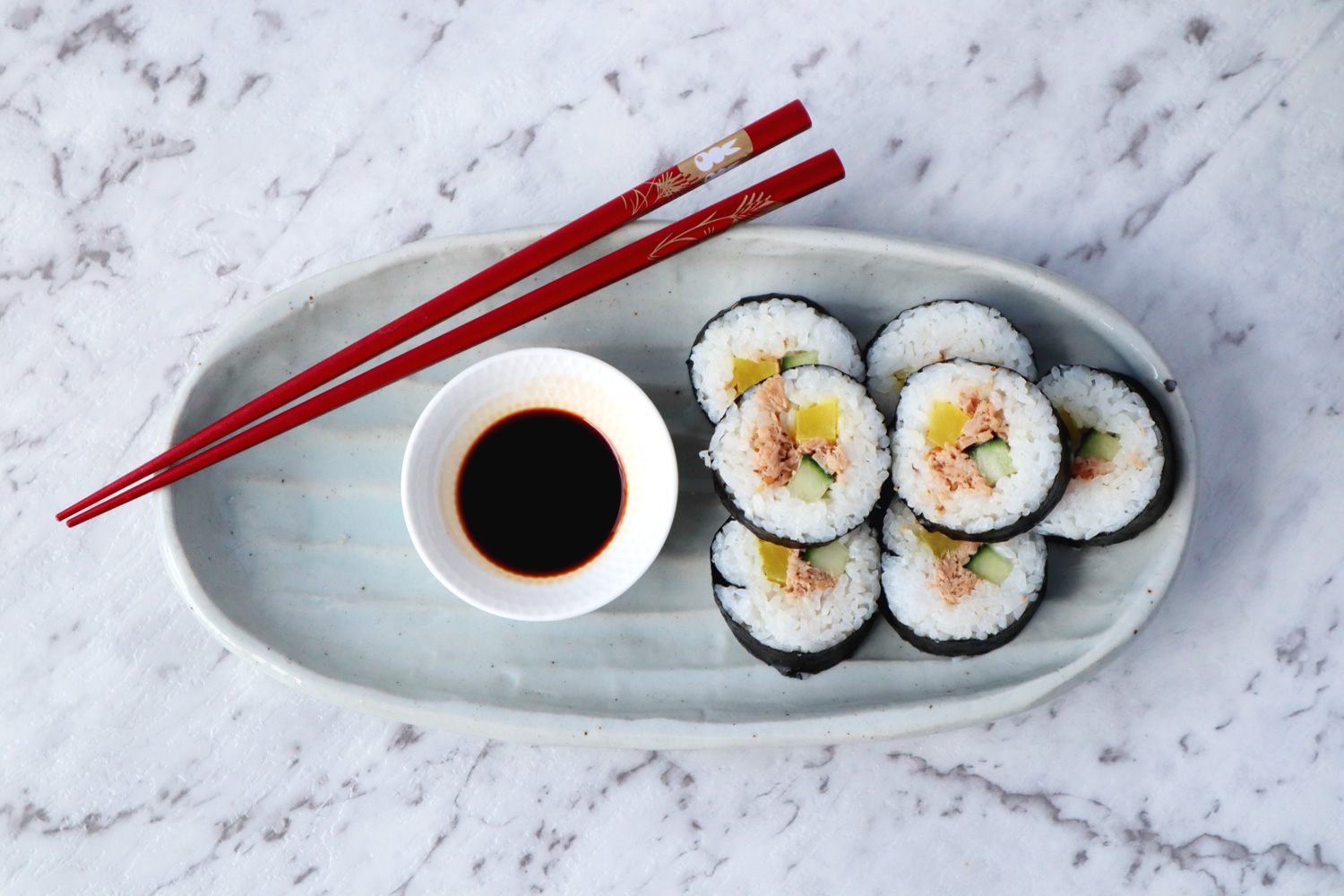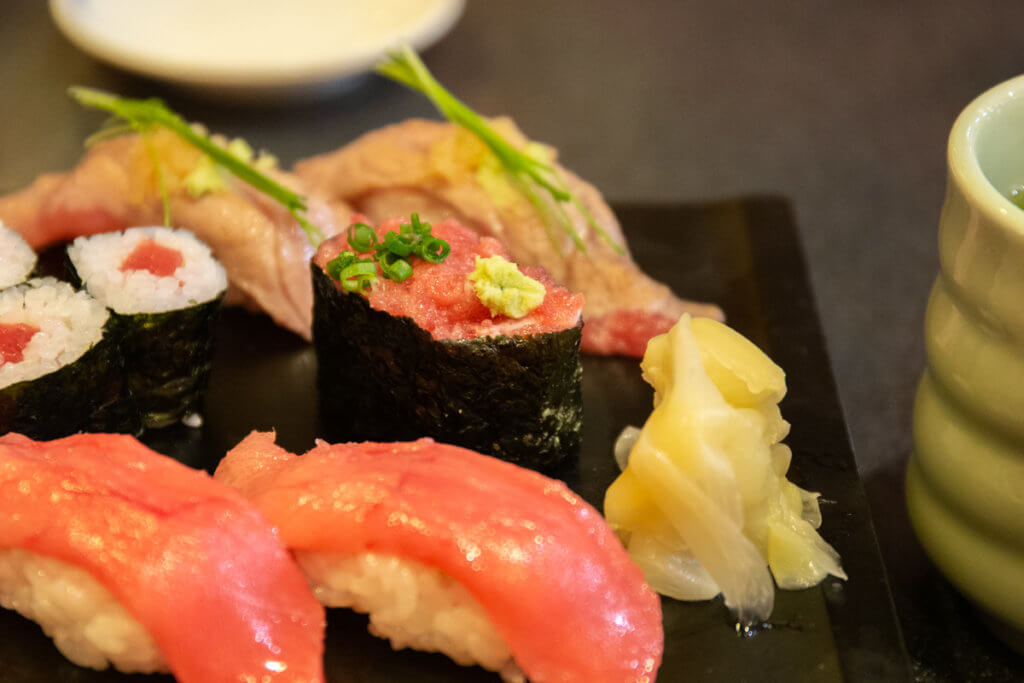Master the Art of Yellowtail Sushi: An Authentic Yellowtail Sushi Recipe Guide
Written By James Morgan
The art of sushi-making has become increasingly popular globally, and for good reason. One of the most coveted sushi varieties is yellowtail sushi. This delicious and elegant dish offers a blend of textures and flavors that make it a standout on any sushi plate. Whether you are a seasoned sushi enthusiast or a beginner looking to try your hands at making sushi at home, this comprehensive guide will provide you with everything you need to master an authentic yellowtail sushi recipe. Our detailed recipe and step-by-step instructions ensure an enjoyable and rewarding experience. Dive in and learn how to make sushi that even the most discerning Japanese chef would be proud of.

Gathering Your Ingredients
Before you embark on the journey of preparing the perfect yellowtail sushi, its essential to gather all the necessary ingredients. Ensuring you have the freshest and highest quality items will significantly impact the flavor and presentation of your sushi. The following are the primary ingredients you will need:
- Yellowtail (Hamachi) Fillet: Fresh and high-quality yellowtail is crucial. You can find this at your local fish market or a specialty store that sells sushi-grade fish.
- Sushi Rice: A short-grain Japanese rice type known for its sticky texture, ideal for forming sushi.
- Rice Vinegar: Adds the necessary tang and enhances the taste of the sushi rice.
- Seaweed (Nori): These sheets will wrap the sushi, adding a subtle ocean flavor and holding everything together.
- Soy Sauce: A delicious dip that complements the flavor of your sushi without overpowering it.
- Wasabi: A spicy paste that adds heat and a unique flavor profile to your sushi experience.
- Pickled Ginger (Gari): Used as a palate cleanser between different pieces of sushi.
- Sugar: To balance the acidity of rice vinegar.
- Salt: For seasoning your sushi rice to perfection.
- Rice Cooker: An easy and convenient way to cook perfect sushi rice without hassle.
- Sushi Knife: A sharp, high-quality knife designed for slicing fish and sushi rolls precisely.
- Cutting Board: A sturdy cutting board is essential for chopping ingredients and rolling sushi.
- Strainer: To wash and rinse the sushi rice thoroughly.
- Sushi Making Kit: This all-in-one kit includes bamboo mats and other tools necessary for rolling sushi like a pro.

Preparing Your Sushi Rice
The foundation of excellent yellowtail sushi is perfectly prepared sushi rice. Follow this detailed process to ensure your rice is as flavorful and authentic as possible. Begin by thoroughly rinsing your sushi rice under cold water using a strainer. Rinse until the water runs clear to remove excess starch. This step is crucial as it prevents the rice from becoming too sticky or clumpy when cooked. Once rinsed, place the rice into your Rice Cooker and add the appropriate amount of water. Typically, the ratio is one cup of water to one cup of rice, but its always best to check the instructions provided with your rice cooker for the best results. Cook the rice according to your rice cookers settings. While the rice is cooking, prepare the sushi vinegar mixture by combining rice vinegar, sugar, and salt in a small pan. Gently heat the mixture until the sugar and salt dissolve completely, but do not bring it to a boil. Once the sushi rice is cooked, transfer it to a wide, shallow bowltraditionally a wooden sushi container called a hangiri. Pour the sushi vinegar mixture over the hot rice while gently folding the rice with a wooden paddle. Be careful not to mash or crush the grains. Let the rice cool to room temperature before using it to make sushi.

Slicing the Yellowtail
The heart of your yellowtail sushi recipe lies in the sliced yellowtail. Mastering the technique of slicing fish is critical to achieving professional-looking sushi. Ensure that your yellowtail fillet is fresh and of high quality. Place the yellowtail fillet on a Cutting Board.Using a sharp Sushi Knife, slice the yellowtail fillets at a 45-degree angle. Each slice should be thin and uniform, roughly 2-3 millimeters thick. Hold the knife at the base of the fillet and pull it towards you in one smooth motion; avoid a saw-like back-and-forth motion to ensure clean cuts and preserve the fish's texture.

Assembling Your Yellowtail Sushi
Now that you have prepared your sushi rice and sliced your yellowtail, it is time to assemble your sushi. You can choose between making nigiri sushi or maki rolls. Nigiri sushi involves placing the yellowtail slices on pressed sushi rice by lightly wetting your hands with water to prevent the rice from sticking. Take a small amount of sushi rice (approximately a golf ball-sized portion) and shape it into an oval. Place a slice of yellowtail over the rice, pressing down gently. For maki rolls, lay a sheet of nori on a bamboo rolling mat from your Sushi Making Kit. Spread a thin layer of sushi rice over the nori, leaving about one inch at the top edge. Place a few slices of yellowtail horizontally across the rice. If desired, add additional ingredients such as cucumber, avocado, or scallions for extra texture and flavor. Roll the sushi tightly from the bottom edge, using the mat for guidance. Wet the top edge of the nori with water to seal the roll. Use a sharp Sushi Knife to slice the roll into bite-sized pieces, ensuring to clean the knife with a damp cloth between slices for a professional presentation.
Serving and Enjoying Your Yellowtail Sushi
Your beautifully prepared yellowtail sushi is ready to be served and savored. Arrange your sushi on a platter or sushi plate, garnishing with pickled ginger, wasabi, and soy sauce for dipping. Sushi is best enjoyed fresh, so serve it immediately to appreciate the balance of flavors and textures. For a complete dining experience, consider pairing your yellowtail sushi with miso soup, seaweed salad, or a cup of hot sake. Such side dishes complement the sushi and enhance the overall meal.
Savoring the Experience
Making sushi at home can be a deeply satisfying and enjoyable experience. Not only does it allow you to create a dish tailored to your tastes, but it also provides an opportunity to appreciate the finesse and artistry involved in sushi preparation. As you become more comfortable with this yellowtail sushi recipe, feel free to experiment with different toppings, fillings, and presentation styles. Taking the time to perfect each step will reward you with sushi that rivals that of your favorite restaurant.
Cleaning Up After Sushi Making
After creating your culinary masterpiece, proper cleanup is essential to maintain your tools and workspace. For cookware, use a reliable Cookware Cleaner to ensure that your pots, pans, and other utensils remain in excellent condition, free from residue and buildup. Regularly applying Cutting Board Oil to your cutting board will keep it well-conditioned, preventing cracks and prolonging its lifespan.
For more sushi recipes and inspiration, check out this collection of sushi recipes on Delish.
Don't forget to explore our other recipes for delicious dishes like Chicken Thighs Preparation and Squash Casserole.
Happy sushi making! Enjoy the delicious journey.
As an Amazon Associate, I earn from qualifying purchases.



